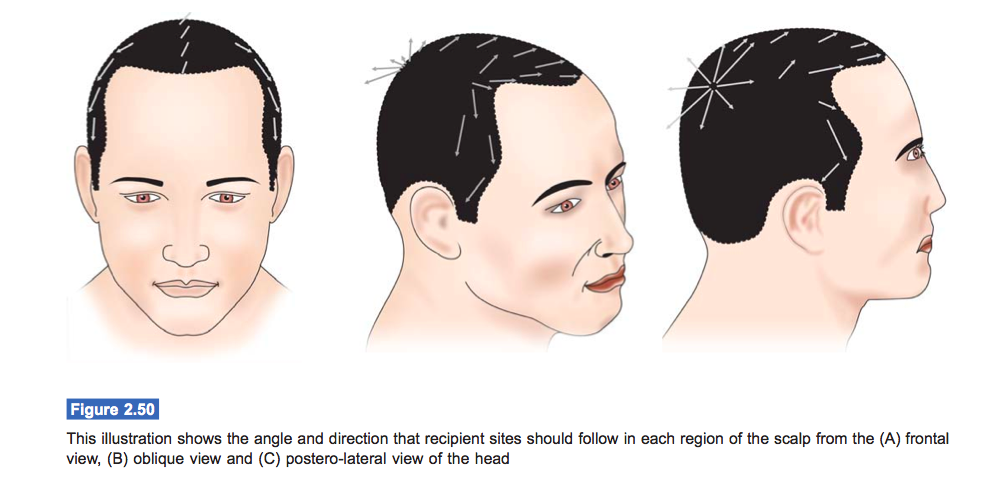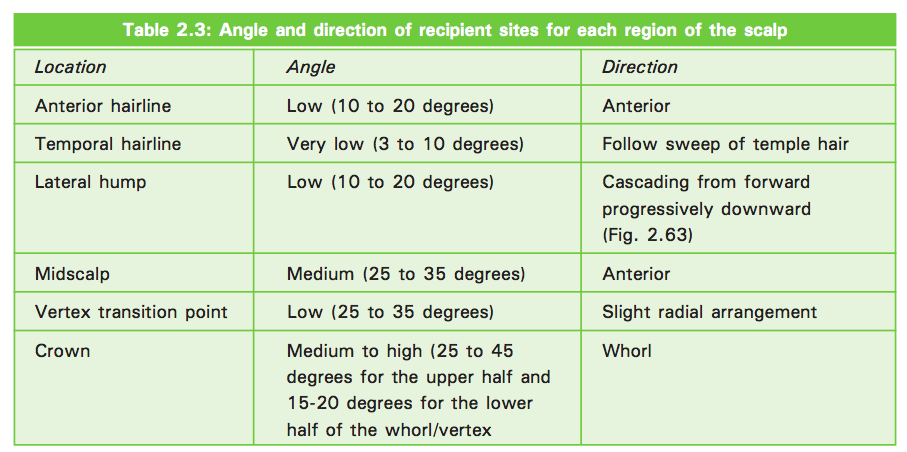Understanding Global Hair Angles and Directions used for a Hair Transplant
Throughout these blog articles, I have emphasized the need to respect natural hair angles and directions when performing a hair-transplant procedure for optimal naturalness in the result as well as for superlative visual hair density. However, I have not globally discussed all of the hair angles and directions required for the entire head. As a reminder, the hair angle refers to the anterior-posterior angle of the hair graft, i.e., how much tilt upward or downward the hair graft is situated vis-à-vis the scalp. The hair direction refers to the lateral side to side rotation to which the hair points, i.e., whether it aims toward the left or toward the right and how much it does so.
Using the illustration and the table below as a reference, the reader can understand more fully what angles and directions are ideal for a transplanted graft based on what region of the head that it should be positioned. In the anterior hairline, the key is to keep a very low angle of 10 to 20 degrees with all hairs directed forward without any radial splaying. The temple hairs must even be lower to the scalp and
follow the unique sweep pattern of the temple hair in which the hairs aim somewhat backward and downward except at the extreme anterior edge of the temporal point where they aim directly backwards and at the lower sideburn where they aim principally downward. The lateral hump describes the area on the side of the head, which is an extension of the anterior temple hair more posteriorly. These hairs should be angled very low but cascade in a direction so that each successive row going downward should be aiming more directly downward like a waterfall. The midscalp hair can have a greater degree of upward tilt to the hair but still should be relatively low in its angle with almost all hairs directed forward anteriorly like the hairline, i.e., they should not splay outward. The vertex transition point should be low to medium in height and splay according to the crown as the crown reaches the anteriorly directed midscalp. Finally, the crown is an area that has radial splaying in a whorl pattern that should have grafts that are relatively higher in attitude to help pack the grafts more tightly in but also to create a rounder, fuller effect in this region. Although it is hard to explain all of these details to a prospective patient, I think it is important for an individual who is contemplating hair restoration to understand the artistry and skills that go into every quality hair transplant procedure.






